I am sure I am not alone with the recent upheaval I have had to…
Tying The Wally Wing
Add in a wing to a fly can add a sighter to your dry flies and might help it fish – but it always looks right on a traditional dry such as the Adams.
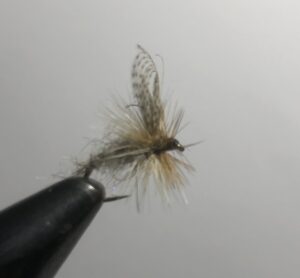 I enjoy tying my Adams with the Wally Wing rather than using the traditional hackle tips – the Wally Wing I find holds up well and adds buoyancy to the fly – and I enjoy tying them.
I enjoy tying my Adams with the Wally Wing rather than using the traditional hackle tips – the Wally Wing I find holds up well and adds buoyancy to the fly – and I enjoy tying them.
I also think they are I think easier to tie than the traditional hackle tip wing – which cam prove fiddly.
However here are the simple steps for tying.
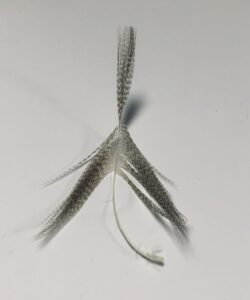 1) Select a suitable Mallard flank feather and prepare it by stripping off the flu at the base of the stem and stroking down the fibres that will form your wing. Selecting the right feather or hackle is key and preparation is the key to a good job. 1) Select a suitable Mallard flank feather and prepare it by stripping off the flu at the base of the stem and stroking down the fibres that will form your wing. Selecting the right feather or hackle is key and preparation is the key to a good job. |
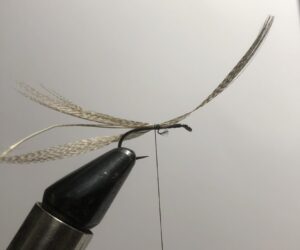 2)Having cast on your tying thread about 4mm back from the hook eye lightly secure your 2)Having cast on your tying thread about 4mm back from the hook eye lightly secure yourprepared feather to the hook shank. Making sure that the outer side of the feather is downwards giving the wings a natural curve up. |
3) Using the tuft of fibres at the end of the feather gently pull the feather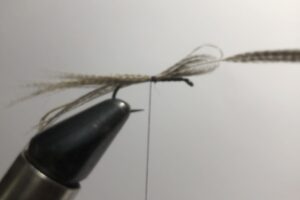 through until you have sufficient fibre pulled through to create the wings of a size you want. through until you have sufficient fibre pulled through to create the wings of a size you want. |
4) Now secure your mallard feather and trim off any waste material.  At this point you would now carry on and tie the body of the pattern and apply the hackles behind the wing and in front of the wing. At this point you would now carry on and tie the body of the pattern and apply the hackles behind the wing and in front of the wing. |
5) Turn the fly towards you and select the fibres on the right side of the rachis or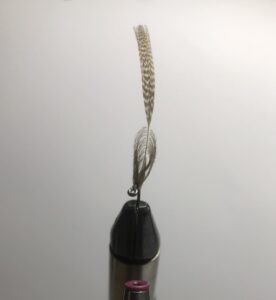 feather stem and gently pull away the fibres. These will come away with part of the stem forming a web. Repeat on the other side of the feather, but this time pull the rachis away from the fibres feather stem and gently pull away the fibres. These will come away with part of the stem forming a web. Repeat on the other side of the feather, but this time pull the rachis away from the fibres |
6) You will know have your two wings separated from the stem and some 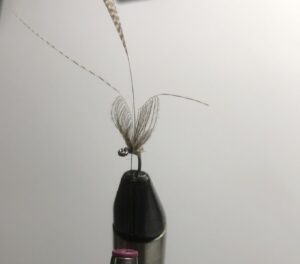 surplus fibres at their tips. surplus fibres at their tips. |
7) Remove the surplus fibres and the feather stem and you are left  with your Wally Wings. with your Wally Wings. |
| Like all techniques you will need to practice tying these – but I am sure you will find this a useful technique to have. |
.



